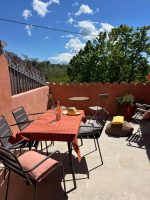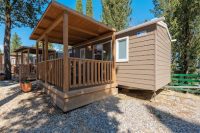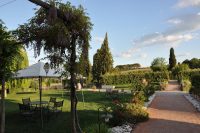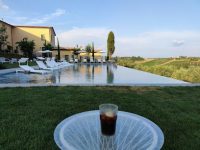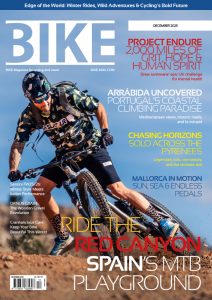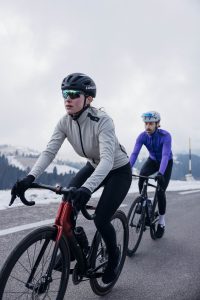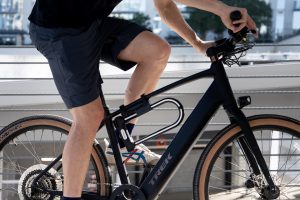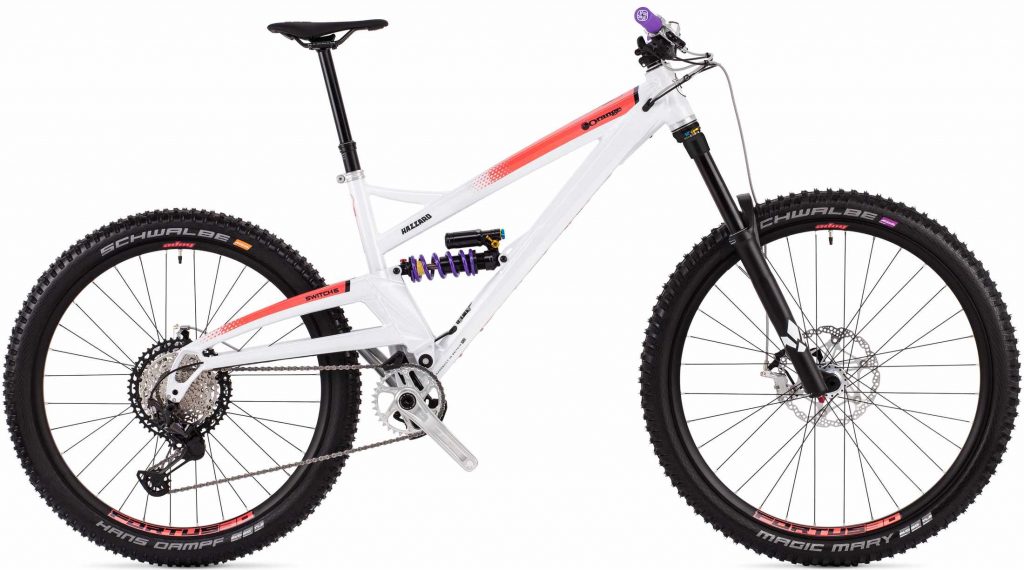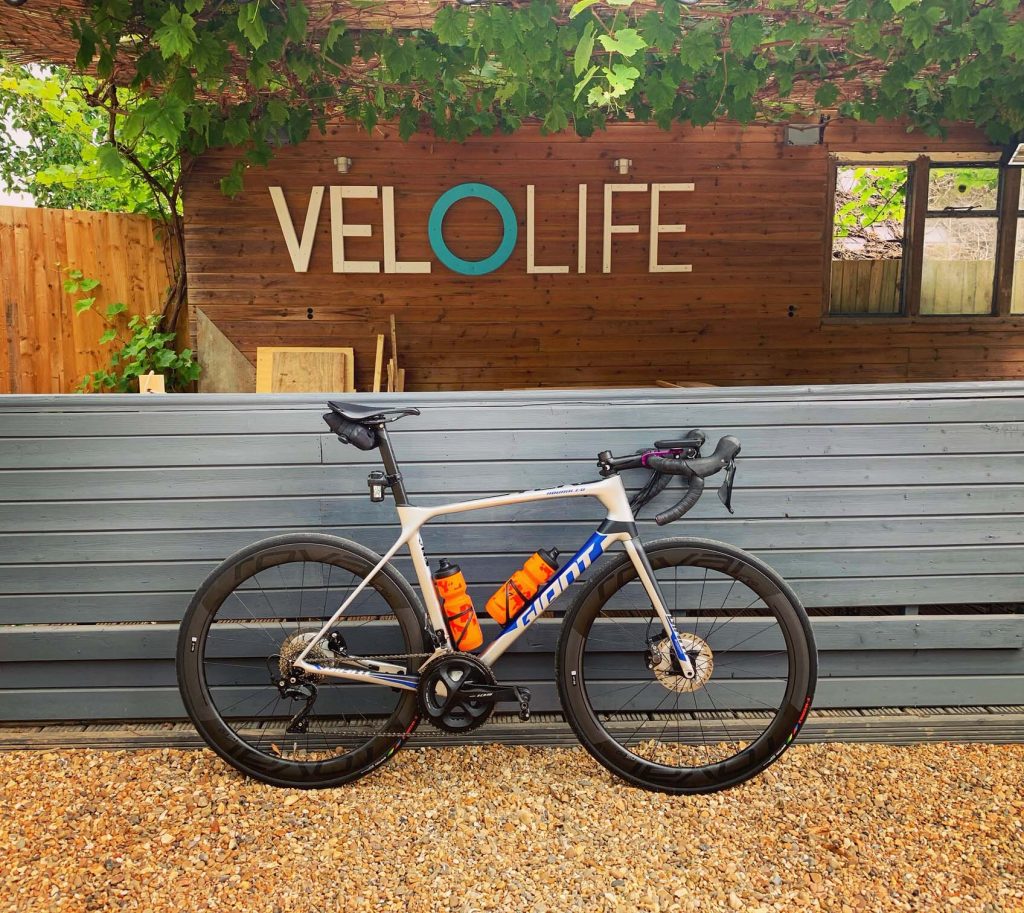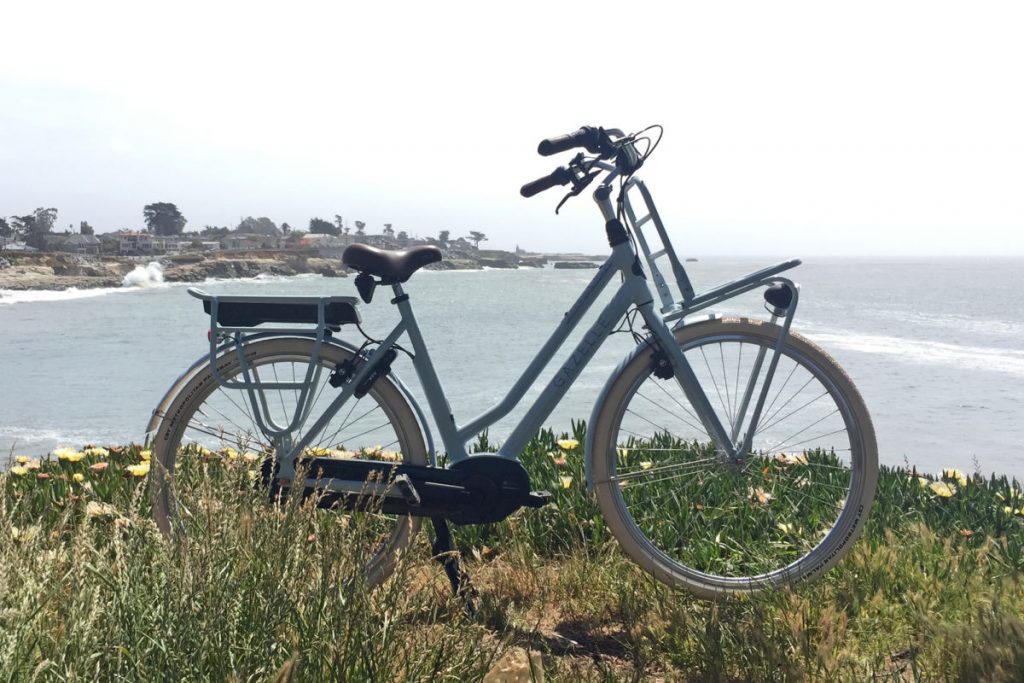Propella 2.0 Single-Speed Review
Propella launched their first product on Indiegogo in early 2016 and has since produced a refined 2.0 version which is what I’m reviewing here. This product comes in either a single-speed or 7-speed setup, and I was loaned the single-speed with an upgraded carbon fiber aero wheel (which retails for an additional £249).
I will be discussing a few differences between the 2.0 and upcoming 2.2, which will arrive in Summer 2018 and is currently taking pre-orders. The main differences are a more upright geometry, rack bosses at the rear dropouts on the single speed frame (the current 7-speed frame has these), wider 700x32c tires, a spring-loaded battery lock, and some controller adjustments.
Propella has two primary goals: Get people riding bikes, and make them look good while they’re doing it. Their newest iterations, the Propella 2.0 and Propella 2.2 seem to have fulfilled those ambitions. It should be noted upfront though that the 2.0 is no longer available, and all orders from Propella from the time of this writing moving forward will be for the 2.2.
This bike has a sweet black and blue color scheme that is well matched from top to bottom. The deep-dish rims and locking points on the grips are metallic anodized blue that is just beautiful. There are also blue accents on the grips, saddle, and battery, and the frame and fork are painted with smooth satin black.
The base model single speed is priced at $1,199, which seems like a sweet deal because the frame is purpose-built with internally routed cables, and many of the accessories are name-brand vs. generic. It would fit perfectly into urban environments, and is easy to lift at just 34 lbs (with the battery left on!) Hills could be a struggle if you’re starting from rest, but once the bike is up to speed, the 250-watt motor basically doubles your human pedal power.
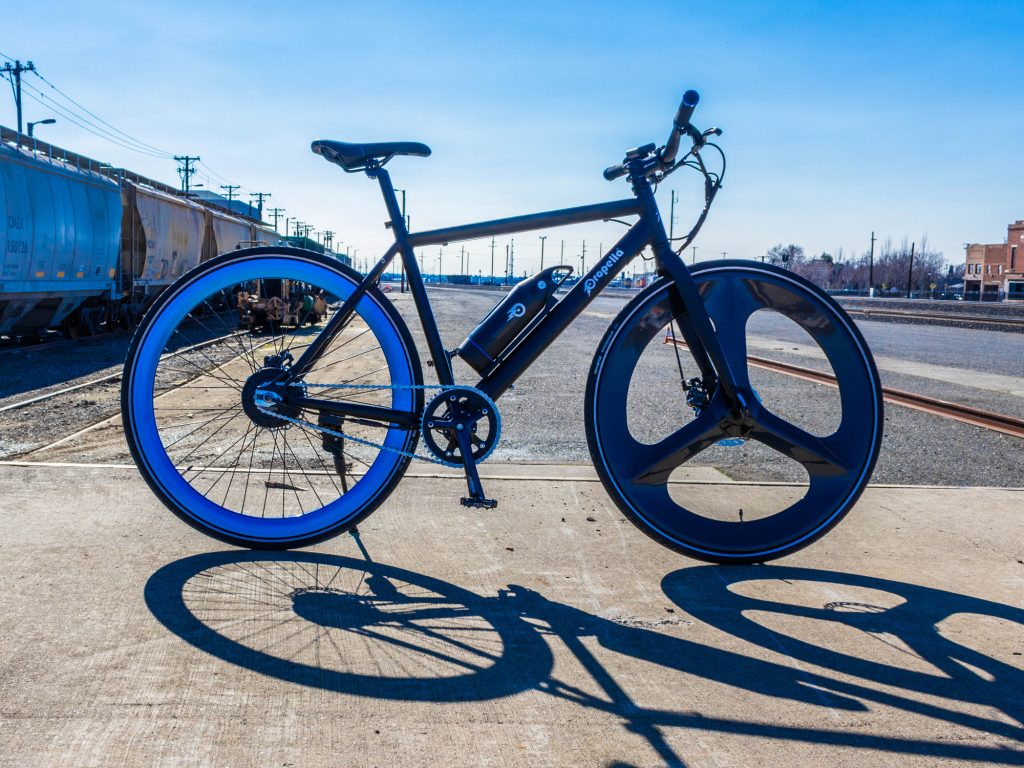
For those who expect to climb hills frequently, consider the 7-speed version, which uses a Shimano Altus derailleur. All models offer a top pedal-assist speed of 16 mph, which is lower than most competing products that top out at ~20 mph. The single-speed gearing is designed to match comfortable pedaling to the speed where the motor begins to fade out, and this improves overall efficiency. The gearing consists of a 44 tooth chainring with a 16 tooth rear sprocket. It currently only comes in one frame size, 19 inches, and a sturdy high-step diamond style. High-step frames are known for being stiff, sturdy, lightweight, and easier to lift and mount on car or bus racks.
The folks from Propella told me that in the coming months, there may be more frame sizes and color schemes available, but with such a low price point, I can see why they stuck with very limited options to begin. I was able to put about 15 miles or so on the Propella 2.0 and I noticed some interesting points about this bike that really stand out. So, let’s dive into this review and take a look at the specs!
Driving the Propella 2.0 to a top pedal-assist speed of roughly 16 mph is a Bafang 250-watt internally geared hub motor. This is a motor I’ve tested a handful of times now and I really like how quiet and efficient it is. Also, given its small size, it all but disappears behind the sprocket or cassette, and disc brake which helps make the Propella 2.0 stealthy. The motor freewheels, and will not produce excess drag as some gearless designs might, so you can still pedal easily when the bike is turned off.
While this motor only puts out 250 nominal watts (with 350 peak watts) it’s still pretty zippy, offering 35 to 40 Newton meters of peak torque. I was talking with Court about this and he made a point that 250 watts are the average power output of a professional cycling athlete. So when thinking about it like that, 250 watts seems like a fair amount of power. It’s also pretty quiet, and while I could hear a slight whirring sound when it was under strain, overall the motor noise was masked pretty well by the road noise and ambient noise.
This bike has a 12-magnet cadence sensor, which measures the rotation of the cranks, compare to a torque sensor, which measures the torque, or pressure, applied to the cranks. Cadence sensors normally have a slight delay from the time I start pedaling to the time the motor actually starts putting out power, and then another delay from the time I stop pedaling to the time the motor shuts off. The same goes for the cadence sensor here, but the 12 magnet design is faster than the 5 or 6 magnet I see elsewhere.
Cadence sensors also have a sort of start-stop feeling to them, where the motor is either on at 100 percent or off. This can make for a jerky ride experience, but the Propella 2.0 is equipped with a pure sine wave controller, which gives a much smoother roll-on of power from the motor (even if the signal going to the motor from the cadence sensor is on/off).
The controller itself puts out 14 Amps and is built into the mounting bracket, which mounts to the downtube. With this slightly nicer controller design, the Propella 2.0 almost feels like riding an electric bike with a torque sensor, which is very cool. The pure sine wave controller also smoothly rolls the power off right around 15 mph, providing increasingly less help from 15 mph to 16 mph, at which point the motor shuts off completely. Again, this just makes for an all-around smoother ride experience compared to most cadence sensors and helps to extend your range.
This configuration feels very well thought out from Propella’s end. When pedaling at 16 mph, I felt my cadence was right in the sweet spot on the single-speed model, and during my 15 miles or so of testing, I found that I was really only using the pedal-assist to help get me up to 16 mph, and then occasionally using it to help maintain 16 mph. I think this is especially important given the below-average capacity of the battery, which is a 36v, 6.8ah battery.
Propella estimates the range of a single charge to be somewhere between 15 and 35 miles, which I think is probably about right given the points above and my ride test. The last thing I want to mention about the motor and cadence sensor setup is that I really only noticed the lag when I was at a dead stop and wanted to accelerate quickly, specifically when I was at a crosswalk and trying to cross the street.
Because this is a single-speed, and because there is a slight delay with the cadence sensor, I found I needed to get out of the saddle and really give it some oomph to get it going. Of course, this will probably be true of all single speeds with a cadence sensor, but I wanted to point it out anyway because there is no throttle. Stopping is handled very well, with motor inhibitors built into both brake levers… the 2.0 uses Zoom but the 2.2 will have nicer Shimano hardware.














